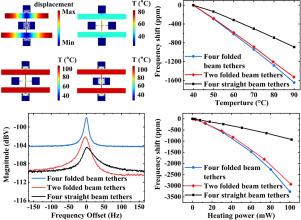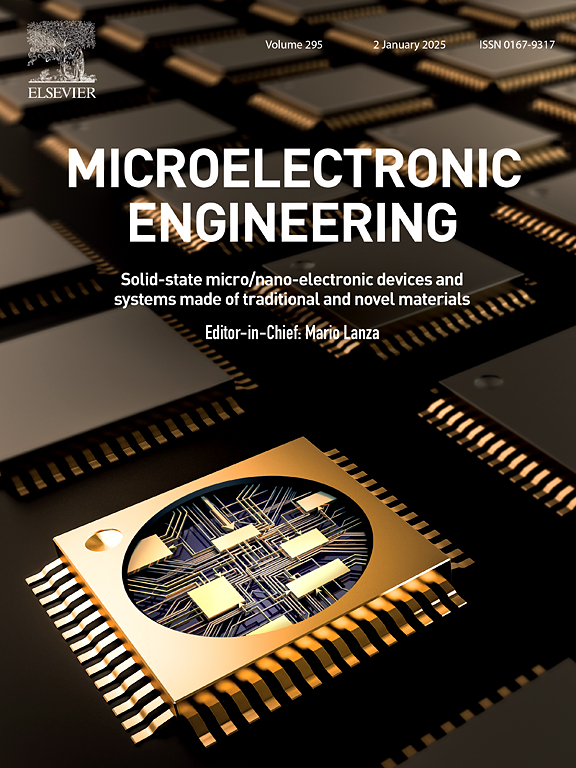Dependence of frequency-temperature stability on support tethers in dual-beam piezoresistive sensing MEMS resonators
Abstract
This paper investigates the dependence of frequency stability over temperature on support tethers in dual-beam piezoresistive length-extensional (LE) mode microelectromechanical systems (MEMS) resonators. The designed dual-beam resonator consists of two identical single-crystal silicon beams, which are mechanically coupled and excited into vibrating in opposite phase to eliminate the inherent capacitive feedthrough signals. Both straight and folded beams are adopted as the support tethers for the reported dual-beam piezoresistive resonators. Quality factor (Q) and temperature distribution across the resonators with various support tethers are investigated by finite element method (FEM) analysis. It is found that folded beam tethers can reduce the support loss and hence improve the Q for the designed dual-beam resonator, while it comes with a tradeoff of high temperature rise on resonator body. The reported dual-beam resonator with straight beam tethers has low temperature rise on the resonator body, which is less sensitive to environmental temperature fluctuations, compared to its counterpart with folded beam tethers. Experimental results show that the fabricated dual-beam piezoresistive resonator with four straight beam tethers achieves a 0.5 ppm frequency shifts in the temperature-control chamber, which is nearly four times better than those with folded beam tethers.


 求助内容:
求助内容: 应助结果提醒方式:
应助结果提醒方式:


